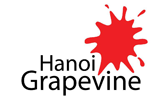City Walks with “Living” Heritage
Written by Dinh Nguyen
Photos by Dan
Graphics by Nguyen The An
Translated into English by Dinh Vu Nhat Hong
Kindly credit VFCD 2020 when sharing the article.
Please do not copy or repost without permission.
Friends of Vietnam Heritage (FVH) joined Vietnam Festival of Creativity & Design 2020 with two events celebrating the cultural heritage of Hanoi – the City Walks around the Imperial Citadel of Thang Long and Yet Kieu Street area.
What’s special in FVH City Walks is the lively continuation of the stories of heritage. In FVH tours, the visitors are also tellers of a city’s stories , shedding light on hidden corners, familiar shops and their stories, which would be passed on to other participants in the next trips.
Check out FVH “specialty” with our account of their two City Walks below!
Imperial Citadel of Thang Long – layers of history
The first City walk took place at the Imperial Citadel of Thang Long. While this is a familiar destination, with an abundance of dedication and detailed images and documents, Alvaro Grana – a teacher from Spain who has lived in Vietnam for more than a decade – provided us with information that even local people would find interesting. Right from the start of the trip, he excitedly gestured at the Lenin Garden and asked us if we knew that that area used to be a lake for elephant-bathing. He then gave an introduction on the Flag Tower of Hanoi, which served as an observatory in the Nguyen dynasty, then a place to enjoy horse-racing in the French colonial era (which was why it was not demolished – he explained), and finally the proof of an independent Vietnam as the Viet Minh Flag flew on the top of the tower.
Entering the Imperial Citadel, we learned more about the historical milestones of the last 1000 years from before the royal capital relocation initiated by King Ly Thai To, and the citadel’s layered structure in the feudal dynasties. The area we were standing at was only a very small area at the centre of the ancient citadel, Alvaro said and pointed at the opposite side of Nguyen Du street to show us where the palace was. There was a plan to build the National Assembly Building over there, but as many important antiquities were found, the structure was relocated to its current location.
As such, stories of the past don’t just remain history. We don’t refer to them as something that happened and then try to reimagine them subjectively in our minds. Images of the past continue into the present, influencing fundamental decisions of humans in modern society. The identification and preservation of relics and heritage thus need not only clarity but also continuation. This clarity is evident in the antiquities in the preserved area and how the surrounding stone walls were reconstructed. Alvaro explained: What needs preserving should be preserved properly, anything added or renovated should be clearly communicated as such, and we could not accept forgery nor replicas – that was what a visitor who came here on a previous city walk said, Alvaro shared.

Upon reaching the third floor of the Citadel, Alvaro showed us many more interesting things. Why do the dragons on the roof turn their heads inward and not outward, like those on the roof of temples and pagodas? It is because these are wooden roofs, and Asian dragons, different from Western fire dragons, represent water, so they turn inwards and release water – a metaphor for fire-resistance. Continuing, he asked us if we knew why throughout the Ly, Tran, and Le dynasties, most of the dragons had five claws, but some others had four. When we, the Vietnamese natives who learned our history in school, could not answer the question, he laughed and explained that back in the days, for the region around China, only the dragon of the Chinese emperor could have five claws, that was not allowed in the surrounding countries. Yet throughout many dynasties, Vietnamese kings still let construct five-claw dragons as a way to stand up against the royal symbol of China, a bold statement of the nation’s independence; the four-claw dragons are only for officials and common people. The Vietnamese should be proud of their history for how resilient they were, Alvaro added.

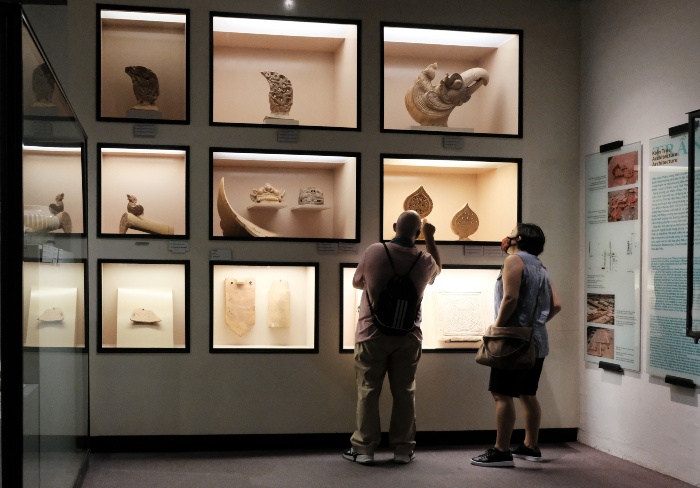
This resilience is not only evident in relics of the feudal dynasties. Going further, we reached the Headquarters – Block D67, Zone A of the Ministry of Defense, the Political Bureau and the Central Military Commission. Here, Revolutionary leaders discussed and agreed on monumental strategies, including the Tet Offensive in 1968 and the Spring-Summer Offensive in 1972. There remain in the meeting room name plates designating the seats of each General, each Commander, along with many important memorabilia from the two patriotic wars. What’s even more special lying beneath the headquarters is a system of underground tunnels equipped with a complex ventilation and drainage system that could withstand bombardment in wartimes. It was so strenuous that a foreigner visitor in the group said he could not imagine how the Vietnamese walked and lived in these tunnels.
The trip came to an end with a discussion on the grand history of the Imperial Citadel. Many expats joining the trip shared that even though they had lived here for eight-ten years, they had never been to the Imperial Citadel, and now that they did, they regretted not visiting it sooner. Specially, several Vietnamese students who just came to the city for their higher education also enjoyed the trip. One expressed her excitement at experiencing such up-close approach to history for the first time. The city walks were also well-received by women expats in Vietnam. Yumi Lee – a South Korean said that she had just been in Vietnam for two months but already got suggested by the expats women club here [about Friends of Vietnam Heritage], “and it’s very interesting”.
A lively tour around Yet Kieu street
In contrast to the walk around the Imperial Citadel of Thang Long, which is already a “signature” of FVH, there have only been three walks around Yet Kieu street area. And the trip immediately went up in duration from 2.5 to 3 hours long, because staying true to FVH philosophy, every visitor on the trip contributes to create the story of the walk and of the city.

This time, Stella Ciorra took the role of tour guide herself. As we gathered in front of the Friendship Cultural Palace, she gave us an overview on the ups and downs of the area’s history, and on the establishment of the Palace. The structure was built on the foundation of the Grand Palais, an exhibition and trade fair complex during the French colonial era, which was destroyed by airstrikes at the end of World War II. An English architect joining us on the walk remarked that the building was heavily influenced by Soviet architecture, to which Stella agreed: “It’s how it is for the few buildings around here. Over there is the Union Hotel. You go in there, it will take you back to the 80s of the Soviet!” She also explained to us a historical period in the French colonisation – this place was just wild swamps until the French came and drained the area.

The walk then continued clockwise following along Tran Binh Trong street. We stopped by Ngoc Lien Temple where Stella recounted the legend of Mountain God Tan Vien, who’s worshipped in the Temple. A History-majored exchange student, who just came back from the UK, also added in other trivial information on the era of Hung Kings, the legends of Chu Dong Tu (a Vietnamese divine being) and the Four Immortals, for the foreigners in the group.
At Thien Quang Lake, we got to learn more about its provenance, as well as some of the supernatural myths surrounding the place. “The tree no. 54 over there, they said that it is haunted!”, said Stella. Even in broad daylight, these stories still sent chills down our spines. She then continued with some fun facts on the flock of swans who were moved here from around Hoan Kiem Lake, and the name of the lake, which means “the way of light”, the light of meditation.
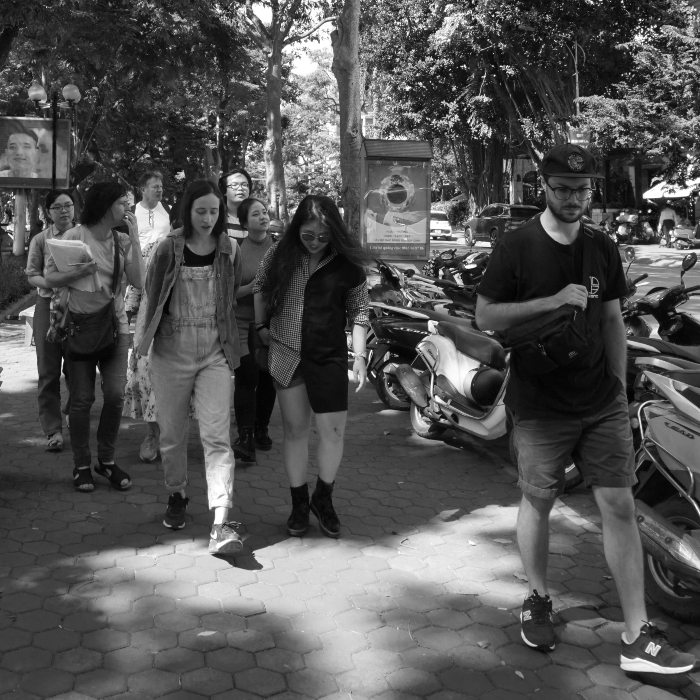
These stories of ours extended from one street to another, and so even it was almost noon, none of us felt tired. When we passed by Do Hanh street, Stella stopped in front of a small coffee shopped. With her face lighted up, Stella shared with us a story about their walk in the Yet Kieu neighbourhood the other day, at one point during which a guest came across her favourite cafe which used to be located near her house but had since moved. She remembered the cafe owner who had a huge collection of clocks strewn across the shop. So the lady rediscovered a friendship and Stella had a new address to add to the walk – “That was incredible”, she told us.
But then she immediately moved on as once we went in, we would have sat around for a whole hour. Still she recommended us to check out this incredible coffee shop whenever we had the time.
This has been an experience that clearly demonstrates the FVH stance on storytelling – a continuous connection between stories from the past and the present. The city tales continued on Yet Kieu street, with a visitor recounting how his parents met at the nearby bakery, when his father was studying at Vietnam University of Fine Arts.
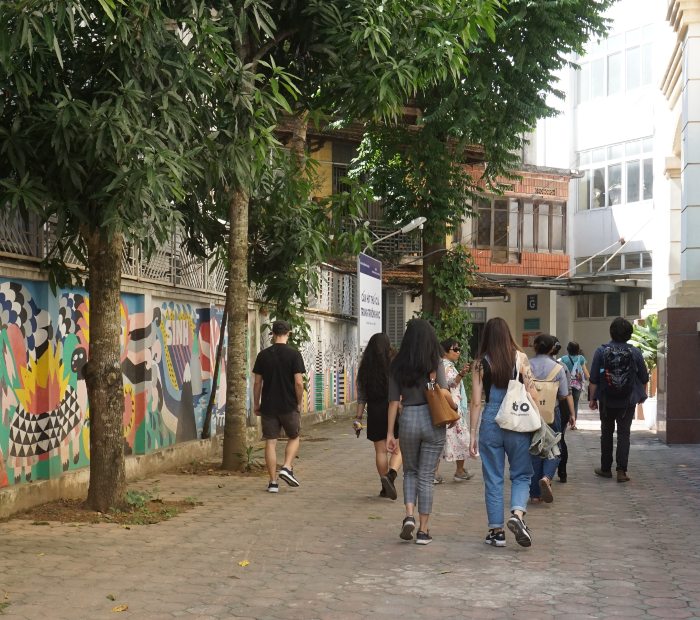
When we arrived at the University of Fine Arts, Stella gave a thorough presentation on the school’s history, from when it was first established under the name École Supérieure des Beaux-Arts de l’Indochine by two artists – Victor Tardieu and Nam Son. Victor Tardieu was professionally trained in Western education, while Nam Son was self-taught and focused on Asian elements, she told us. The two supported and helped each other, leading the school to new breakthroughs, especially on the study of lacquer painting – a very Vietnamese form of art. Stories on the art of lacquer were present in detail in another FVH excursion.
We also got to visit the old quarter of the university, where Victor Tardieu used to live and work. Then, proceeding to Le Duan street, we saw another side of the block: hidden in an old alleyway was a special gate designed by Tardieu himself, and although demolished, it still retains its unique features.
The walk ended at 13h30, half an hour past the expected schedule. Yet no one felt tired. Sharing and listening to stories all made us excited and wanted to create our own. Alex, who recently arrived in Hanoi, said: “I have always seen Hanoi as if they only have the Old Quarter. But now seeing these, I love it, and I think there are stories everywhere!” Thanh, another visitor said: “Although I’m a Vietnamese, this trip has helped me learn so many new things. What’s special about Hanoi is that everyone is so energetic.”
Final words
The two city walks in the Festival have ended, still FVH have many upcoming trips to offer with more stories to be passed on. This is why FVH philosophy in heritage conservation, in Hanoi in particular and in Vietnam in general, is always special and unique. Instead of focusing on academic knowledge the way the organisation did in its early years, these days the City Walks have become more visitor-friendly, more dynamic and connected to what’s held dear by each individual in the city. In this manner, we have more understanding and affinity for the everyday heritage around us.
“So many think that we do physical reservation work, but we actually don’t. We tell the stories, keeping it alive, which is getting much harder now.”
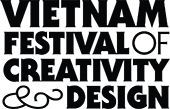 | Vietnam Festival of Creativity & Design Website YouTube |
